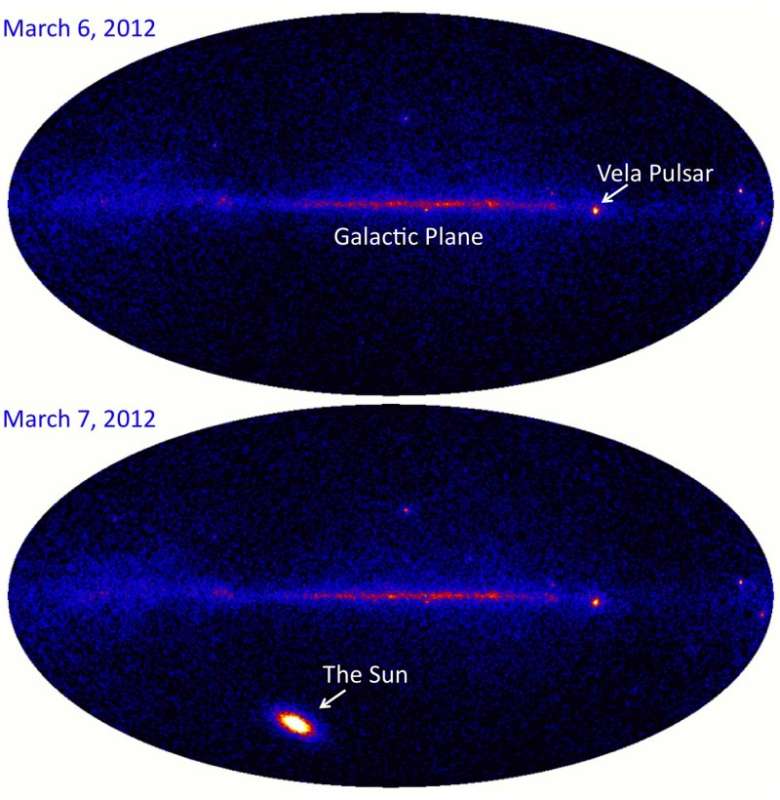
|
Explanation: What shines in the gamma-ray sky? The answer is usually the most exotic and energetic of astrophysical environments, like active galaxies powered by supermassive black holes, or incredibly dense pulsars, the spinning remnants of exploded stars. But on March 7, a powerful solar flare, one of a series of recent solar eruptions, dominated the gamma-ray sky at energies up to 1 billion times the energy of visible light photons. These two panels illustrate the intensity of that solar flare in all-sky images recorded by the orbiting Fermi Gamma-ray Space Telescope. On March 6, as on most days, the Sun was almost invisible to Fermi's imaging detectors. But during the energetic X-class flare, it became nearly 100 times brighter than even the Vela Pulsar at gamma-ray energies. Now faded in Fermi's view, the Sun will likely shine again in the gamma-ray sky as the solar activity cycle approaches its maximum.
|
January February March April May June July August September October |
| ||||||||||||||||||||||||||||||||||||||||||||||||
NASA Web Site Statements, Warnings, and Disclaimers
NASA Official: Jay Norris. Specific rights apply.
A service of: LHEA at NASA / GSFC
& Michigan Tech. U.
Based on Astronomy Picture
Of the Day
Publications with keywords: Sun - flare - gamma ray
Publications with words: Sun - flare - gamma ray
See also:
